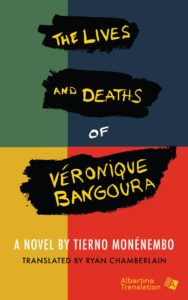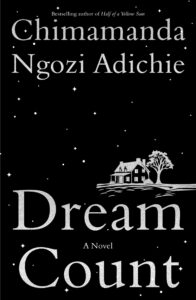Three things happen at the beginning of Abubakar Adam Ibrahim’s third novel When We Were Fireflies. First, the protagonist Yarima Lalo, a lovelorn artist, in a scuffle on a train suddenly remembers that the last time he was alive, he had been killed at that same train station. Second, he meets a woman who asks him for the time. Third, he discovers the time in the clock in which most of the magical events in his life occurs.
The result of these three occurrences is that Lalo’s life, as he knows it, begins to change. By virtue of his newly acquired memories, he finds that he is a spirit who takes a new body but each time dies for love, and is likely to do so again. He decides to solve the puzzles of his past lives.
When We Were Fireflies attempts to look beyond the impenetrable boundary placed on life by death. It seems to ask: What if death is not the end? How does a man who suddenly remembers his past lives embrace the burden of new memories? How does he confront the losses, now firmly woven into his present? Lalo’s story brings into perspective how memories shape how we live, create, love, journey, and even why we grieve.
It is an allegory of how we die different deaths in a single lifetime, how, as we transition into different versions of us in one lifetime, we are aware of who we once were only by virtue of memory. It calls to mind Teju Cole’s suggestion that, although life seems like continuity, it is only when we look back do we realise that it is a series of discontinuity. The illusion of continuity is fuelled then by memory. What we remember of who we used to be shapes who we become.
When We Were Fireflies is also a story of finding love, and how love often sets the compass of one’s journey. It brings to mind Kwesi Brew’s poem “The Mesh”: You lifted the lamp of love/ And I saw in your face/ The road that I should take. The interaction between Lalo and the woman on the train ensures that his journey does not become a frustrating ordeal to be interpreted by everyone as the eccentricity of a mad artist. It sets the stage for a remarkable plot twist.
There is an intricacy in Ibrahim’s writing that gives his sentences the weight of poetry. It shows in the description of elephantiasis: “Turai got pregnant with an elephant” and “felt a sharp prick on her leg.”
It shows also in his appreciation of setting. In his debut novel Season of Crimson Blossoms, I could see myself with Reza walking down San Siro, where the musicians sometimes played and illuminated the atmosphere. In When We Were Fireflies, vivid images range from Libya frying his golden yams and chicken to the child spirit pushing a trolley down the street and Lalo rushing to catch up with her, to the collectors in a procession as they harvest the souls of those who have crossed over, and to each time that Lalo and Aziza arrive a new city.
You could see Lalo painting and looking out the window, see Aziza in her henna parlour, posting on Instagram while her daughter eats, just before a customer walks in. Such atmospheric quality invoked in me a hunger to live in the book.
In setting the story in five cities across Northern Nigeria — Jos, Abuja, Kafanchan, Kaduna and Maiduguri — Ibrahim captures the historical and contemporary tensions and changes in these areas, and how they weave around Lalo’s life. I demand a lot, politically, from writers, and I think writers from Northern Nigeria should do more, but I wouldn’t ask more from him in this book.
When We Were Fireflies pays homage to Gabriel Garcia Marquez, whose debut novella Leaf Storm gives Ibrahim’s second chapter its title. But this books also reminds me of Leo Tolstoy’s Anna Karenina: the meeting between Anna and Vronsky happens in a train station under similar circumstances, although the love between Lalo and Aziza becomes redemptory.
Ibrahim’s fiction can often be didactic. Lalo’s adventure is, ultimately, meant to show why forgiveness, and not revenge, is the best path. Yet When We Were Fireflies stands out. It is one of the best contemporary novels out of Nigeria that I have read. ♦
If you love what you just read, please consider making a PayPal donation to enable us to publish more like it.






4 Responses
How does it end?
Pages 341-471 and 400 to the end have blind spots.
Beautiful review. “When We Were Fireflies” is truly a masterpiece.
I love the book. Beautiful one. Creatively creative
I have this surge in me to get this book and get woven into the words and sentence perhaps to get this picture clear but my advances have bore no fruits rather to end up in futility.kindly as I wait for the hard copy,could their be any means on how I can get access to a pdf of the same.